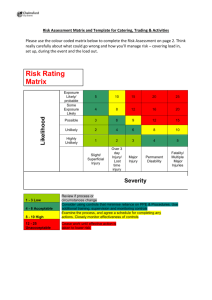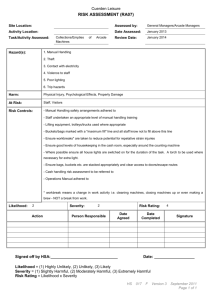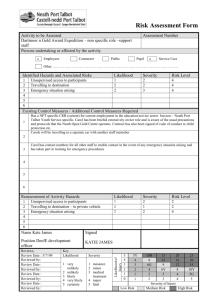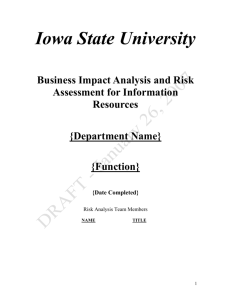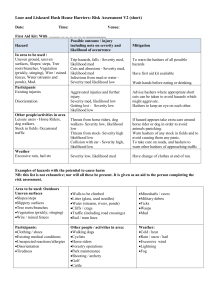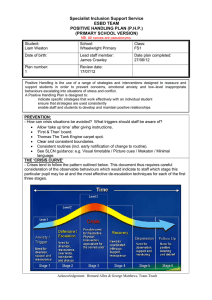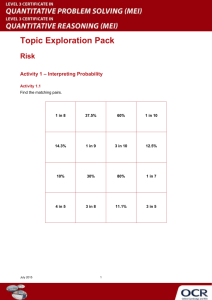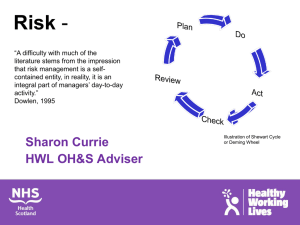Project Risk/Reward Assessment
advertisement
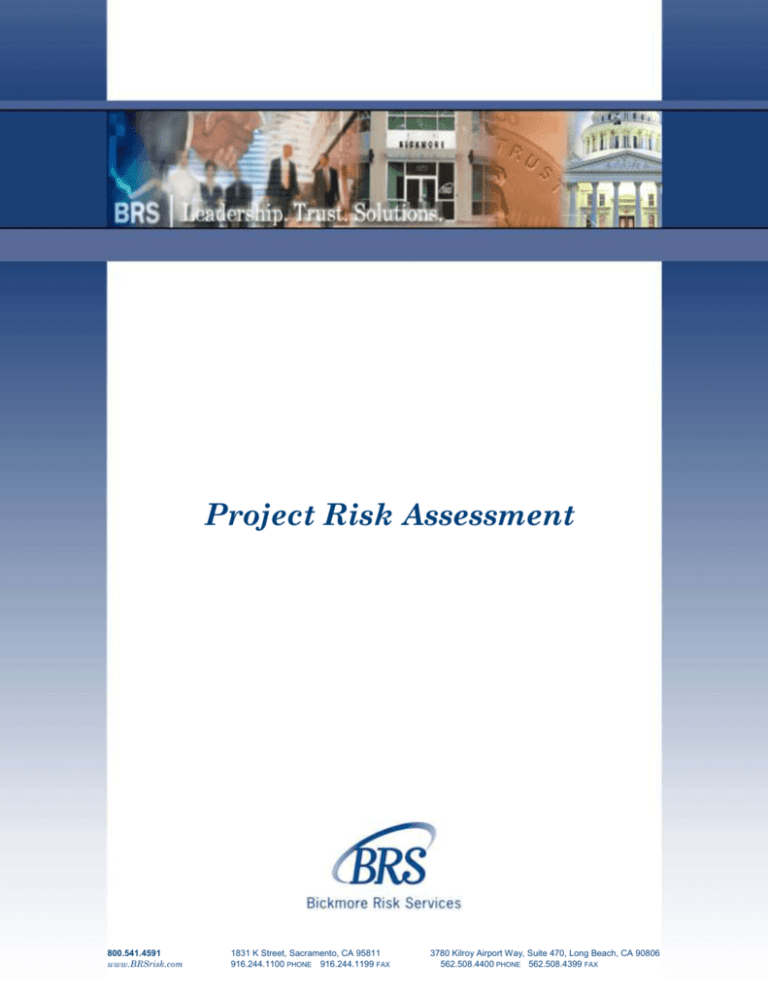
Project Risk Assessment 800.541.4591 www.BRSrisk.com 1831 K Street, Sacramento, CA 95811 916.244.1100 PHONE 916.244.1199 FAX 3780 Kilroy Airport Way, Suite 470, Long Beach, CA 90806 562.508.4400 PHONE 562.508.4399 FAX Project Risk Assessment A project risk assessment is completed to document: The identification of risks, The logging and prioritizing of risks, The identification of risk mitigating actions, The assignment and monitoring of risk mitigating actions, and The closure of risks The project risk assessment may be used to formally assess any type of risk; however, the most frequent types of risks identified relate to a project are: Scope Deliverables Timescale Resources Project risk factors may also be evaluated by taking into consideration such factors as: The project’s strategic risk, The project’s operational/tactical risk, The project’s financial risk, The project’s compliance risk, and/or The project’s reputational risk Project risk assessment typically includes: Project information (attach project charter and scope) A description of the risk identified A risk mapping of the risk’s probability and impact Risk control options to minimize the probability Risk control options to minimize the impact Risk acceptance by the project owner When to use a Risk Form The project risk assessment should be used at the business case development stage of the project to assess the impact on the enterprise. The project owner will need to determine whether or not the risk is acceptable or adequately controlled. The project manager may be required to provide more information or a formal feasibility study to assess the options for mitigating actions. Following the completion of either of these activities, the project will be presented to the project owner for approval. The project manager will monitor the status of the risk and communicate the ongoing risk status to the stakeholders. How to use this form This following form is a guide to the topics usually included in a project risk assessment. Sections may be added, removed, or redefined to meet your particular business circumstance. Example tables, diagrams, and charts should be added as needed to document risk assessment or control factors. Project Risk/Reward Assessment PROJECT DETAILS Date: Project Name: Project Manager: Project Charter and Scope: Date on which this form is completed Name of the project to which the risk relates Name of the project manager responsible for mitigating the risk (attached) RISK IDENTIFICATION Risk Category: Project Risk Impact: Scope Timescale Enterprise Risk Impact: Strategic Compliance Risk Description: Resources Budget Deliverables Reward Operational/tactical Reputational Financial Risk Taking for Reward Provide a concise description of the risk(s) identified above and the likely impact on the project or enterprise Risk Probability: Describe and rate the likelihood of the risk eventuating (i.e. Low, Medium, or High) Risk Impact: Describe and rate the impact if the risk eventuates (i.e. Low, Medium, or High) Attach risk map as warranted RISK CONTROL Reward Assurance Negative Result Preventative/Control Actions: Add a concise description of risk prevention and control actions Recommended Contingent Actions: Add a brief description of any actions that will be taken to minimize its impact on the project APPROVAL DETAILS Supporting Documentation: Reference any supporting documentation used to substantiate this risk Approval Signature of Project Owner: Date: Risk Map Risk Assessment Chart Instructions Using a score of 1 to 9, plot the likelihood of a risk occurring in the next year and assign a score based on your knowledge of the risk. Score 1 if there is almost no chance of an event in the next year. Score 9 if the event is a near certainty. Score 2 through 8 depending on the likelihood of an event happening. Using the same methodology, score the significance of the risk based on the financial impact in the event of an occurrence. Plot all identified risks. Calculate the risk score by converting the single digit number to a two digit decimal (for example 6=.60) number and multiplying the two decimals together. For example: .60 x .35 = .21 This is the risk score for use in ranking the risks. The ranking should be recalculated at each level of the organization to address the impact on the organization. What could be a .75 on an individual department could be a .35 for the organization as a whole. Frequency - Likelihood Example 9 8 7 6 5 4 3 2 1 R-6 R-1 R-2 R-5 1 Severe Risk Risk R-1 R-2 R-3 2 High Risk I III II IV 3 4 5 6 Severity - Significance Elevated Risk Frequency - Likelihood 0.7 0.6 R-4 7 8 9 Guarded Risk Severity - Significance 0.4 0.7 Risk Score 0.28 0.42 Risk Map Risk Assessment Chart 9 8 Frequency - Likelihood 7 6 I III 5 II IV 4 3 2 1 1 2 3 4 5 6 7 8 Severity - Significance Severe Risk Risk High Risk Frequency - Likelihood Elevated Risk Severity - Significance Guarded Risk Risk Score 0 0 0 0 0 9
